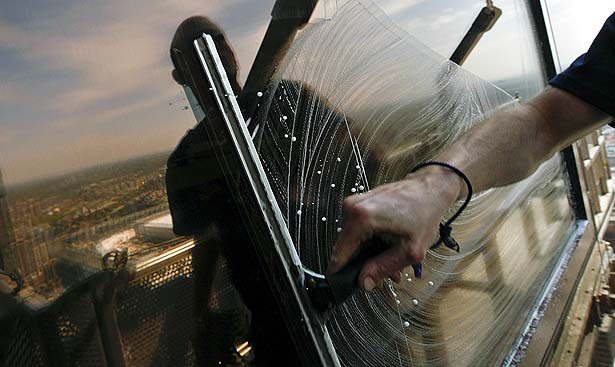Window cleaning is the process of cleaning the glass surfaces in a building or home. This process may include cleaning of decorative, lighting, or structural glass. It may be done manually or by using a variety of tools and technology. In recent years, automated window cleaning has become popular. Learn how to clean your windows the right way and avoid the mistakes that can result in permanent damage to the glass.
Using a mop
Cleaning windows is often on the list of the least desirable tasks around the house. Unfortunately, windows can be tough to reach and dirty. But with a simple mop, you can give them a deep clean. A mop can serve as an extension pole that can reach the hard-to-reach places on the window, and a squeegee can be used to wipe away excess water and dirt.
If you are cleaning high windows, you may want to use two separate mop heads, one for the water and one for the window glass. Dip one head of the mop in a homemade window cleaning solution and use the other to clean the glass. After the mop has been saturated with the solution, spray it onto the window and wipe from top to bottom. You should always work on a cloudy day to ensure that the windows are streak-free. If possible, avoid using a steam mop as some models can leak water and leave streaks.
Using a telescopic pole
Using a telescopic pole for window cleaning can be a convenient and effective way to clean windows. These poles can be easily extended and can be used for cleaning both inside and outside windows. Many of these poles also include adjustable collars that allow the user to adjust the length of the pole.
Telescopic poles are useful for cleaning tall windows. They can be used to reach those windows that are out of reach, like the picture window over the front door. They also work well for cleaning skylights and other high-up windows. The telescopic pole makes it easy to reach high windows, which eliminates the need for ladders and their associated risks.
Using vinegar
White vinegar and warm water are an effective combination for cleaning windows. You should use a sponge to apply the solution to your windows. Avoid using steel wool or rough scrubbing cloths. The solution should dry quickly after it touches the windows. Apply it to one section of the window at a time and wipe it with a dry cloth.
Mix equal parts of vinegar and water. Pour this solution on the window and scrub in a circular motion. Rinse thoroughly after each pass to remove any remaining residue. Use a microfiber cloth to dry the window after the treatment. Alternatively, you can use a paper towel or kitchen towel.
Using anti-static cleaners
Anti-static cleaners can be used to remove dust and other particles on windows. These cleaners can also be used to clean wood or plastic frames. These cleaners work by dissipating static electricity, which is responsible for the buildup of dust. They can also be used on windows that have coarse dirt on the sill.
Anti-static cleaners can be used on windows to reduce dust, as well as to keep clothing from sticking to the glass. These cleaning solutions are available in a wide variety. It’s important to read the instructions carefully before using any cleaner on your windows.
Using a lemon
A lemon is an excellent cleaning agent and a great way to sanitize your windows without having to use harsh chemicals. Lemon juice works just like vinegar to cut through grease and polish glass. This natural cleaner is also safe for antique and stained glass windows. You can also use lemon juice as a car wash soap.
Lemon juice and vinegar are two common ingredients in window cleaners. Mix them together in a spray bottle and use it to clean your windows. A lemon-vinegar solution can also be used to remove stubborn water stains. Using a sponge dipped in the mixture can remove the toughest stains. You can also add essential oils for a scented clean.
